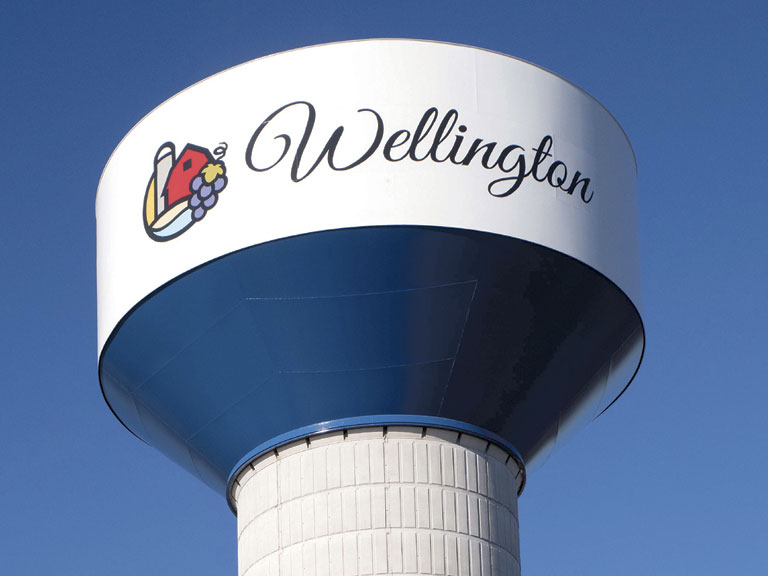County News
A clear path

BY TIM GOOD, PHYO KYI AND WENDY MATTHEWS
In the July 24 issue of The Times, former councillor Ernie Margetson asked a simple question: “How long can we afford to carry the cost of what we have already spent?”
It’s a question all ratepayers are asking, given the $40+ millions that has already been spent on waterworks infrastructure in Wellington.
It’s a drop in the bucket as Shire Hall forges ahead with the regional waterworks expansion plan projected to cost upward of $250 million over a generational time frame of 25+ years.
Residents agree with Ernie that the time has come to prepare a new plan. A plan that will “Involve residents and waterworks customers… Put it in plain language and tell people what are the challenges and the proposed solutions.”
Fortunately, there is a clear path to manage this challenge. Both the public and private sectors have developed disciplined program management practises that minimize financial risk and increase the likelihood of successful completion of large-scale capital programs like our waterworks expansion.
It’s time to create a computer-modelled timeline, a road map, for the entire waterworks expansion project. It will be a plan of action, a living document based on three essential components: Program Management, Cost Recovery Management, and Communication Plan. It will need to be continually referred to, refined, and adjusted over many years of scrutiny, decision-making, and implementation by several different councils before it is completed.
This roadmap, based on the essential components of any large-scale capital program, is the responsible path forward. It will provide the information and level of detail to:
- enable us to synchronize our infrastructure expansion projects to the pace of the imminent developments;
- maximize our cost recovery to ensure ‘Growth Pays for Growth’ and,
- supply the information needed to provide clear and concise communication to Council, the program sponsor responsible for the critical decisions, community residents, ratepayers, and developers.
It’s not too late. The time is now to pause—take the responsible path forward and create a roadmap for the entire waterworks expansion program.
Waterworks Program A Responsible Path Forward
The County’s current docket of waterworks projects to facilitate projected future growth represents an undertaking with a high degree of risk in terms of execution and financial management. Consequently, a responsible path forward is required that will ensure the following:
WATERWORKS PROGRAM MANAGEMENT
What is It?
A group of related projects, managed in a coordinated way so that its overall costs, dependencies, decision points, and expected benefits can be tracked and managed easily, in a manner not possible if the projects were viewed individually.
Why you need it?
• Provides an overview of all components, esstages, and scope of the program with timelines and budget.
• Ensures all stakeholders are focused and collaborating to achieve a shared strategic vision.
• Ensures the project is completed within time and budget by providing a clear roadmap for all to follow.
COST RECOVERY MANAGEMENT
What is it?
A plan that shows the timeframe around the recovery of all development charges and other like revenues (estimated vs. actual) over the timeline of the program.
Why you need it?
• Critical key performance indicator that shows the recovery of program costs over time through the collection of development charges and other like revenues.
• Critical success factor for the program overall is based on the assumption that “development pays for development.”
COMMUNICATION PLAN AND MANAGEMENT
What is it?
A plan that provides clear and concise communication regarding the overall objectives, progress updates, challenges, changes, and risks over the course of the program to all stakeholders.
Why you need it?
• Ensures all stakeholders (Council, staff, constituents) are provided with the information they need on a timely basis to understand the health and progress of the program overall.
• Provides details that ensure communication is suitable for all stakeholders (audience, deliverable, timeline, description, delivery method, owner).
• Helps to reduce confusion, encourage transparency and enable the project to remain on time and on budget.
Tim Good, Phyo Kyi, and Wendy Matthews are concerned ratepayers with a collective understanding of municipal water systems and experience in managing long-term capital projects.

When the very respected former Councilor Margetson and Engineer says pause, what more do you need to hear?
Bravo to Tim Good, Phyo Kyi, and Wendy Matthews.
This is the most damning indictment that Shire Hall is not up to professorial standards and in a self serving institution.
How can our Shire Hall engineers, paid from our taxes, tolerate running projects without the tools that will allow them to get an all encompassing overall view of municipal programs and insure the tax payers get the most bag for their $$$???